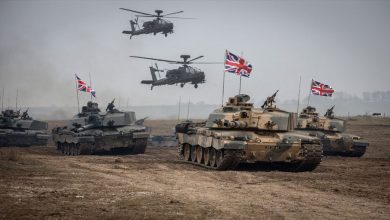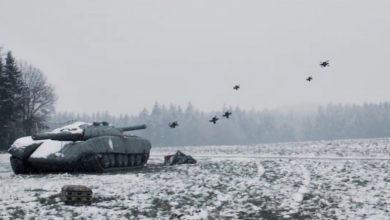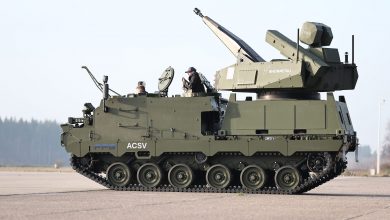
NATO Genel Sekreteri Stoltenberg, Türkiye’nin önemli bir müttefik olduğunu vurgulayarak, “Türkiye’nin Irak ve Suriye’ye sınırı bulunuyor ve uluslararası terörle mücadelede önemli bir rolü bulunuyor.” dedi.
NATO Genel Sekreteri Jens Stoltenberg, NATO Dışişleri Bakanları Toplantısının ilk günkü oturumlarından sonra basın toplantısı düzenledi. Stoltenberg, bir soru üzerine Türkiye’nin S-400 sistemlerini satın almasıyla ilgili endişeler bulunduğunu ve daha önce bunu dile getirdiğini belirterek, Doğu Akdeniz konusunda da gerginliği düşürmek için Türkiye ile Yunanistan arasında NATO’da bir ayrıştırma usulleri mekanizması kurulduğunu hatırlattı.
NATO’nun Ege Denizi’ndeki mevcudiyetini anımsatan Stoltenberg, bu sayede Türkiye, Yunanistan ve AB’nin göç konusunda bir araya geldiğini, bu durumun Türkiye-AB arasındaki mutabakatın uygulanmasına yardımcı olduğunu söyledi.
NATO’nun Ege Denizi’ndeki mevcudiyetini anımsatan Stoltenberg, bu sayede Türkiye, Yunanistan ve AB’nin göç konusunda bir araya geldiğini, bu durumun Türkiye-AB arasındaki mutabakatın uygulanmasına yardımcı olduğunu söyledi.
NATO’nun farklılıkların ele alınması ve anlaşmazlıkların çözülmesi için bir platform sunduğunu kaydeden Stoltenberg, “Aynı zamanda Türkiye’nin önemli bir müttefik olduğunu göz önünde bulundurmamız gerekiyor. Türkiye’nin Irak ve Suriye’ye sınırı bulunuyor ve uluslararası terörle mücadelede önemli bir rolü bulunuyor. Başka hiçbir müttefik Türkiye kadar mülteciyi barındırmıyor.” dedi.
Türkiye’nin Afganistan önerisi
Stoltenberg, Afganistan konusuna değinerek ABD’nin Afganistan barış sürecini canlandırmak istediğini, aynı zamanda gerçekçi olduklarını ve barış görüşmelerinin başarıyla sonuçlanmasının garantisinin bulunmadığını vurguladı.
Taraflara iyi niyetle müzakere yürütme, yapıcı olma ve fırsatı kaçırmama çağrısında bulunan Stoltenberg, uluslararası aktörlerin de süreci desteklemesini istedi. Stoltenberg, şöyle devam etti:
“Bugünkü toplantıda bu konuda yapıcı bir görüşme yaptık. Afganistan konusunda bir karar vermememizin nedeni barış sürecinin nasıl evrileceğini görmek istememiz. Yeni toplantılar yapılacak. Türkiye’nin Dışişleri Bakanı Mevlüt Çavuşoğlu, Afgan barış sürecini destekleyecek toplantıya ev sahipliği yapmayı önerdi.
Müttefikler de Afgan güvenlik güçlerini desteklemeyi sürdürme taahhüdünde bulundu. Şu anda müttefikler için en önemlisi koordine içinde olmak, istişarelerde bulunmak ve kararları beraber alıp birlikte hareket etmek.”
Afganistan konusunda “Kolay bir çözüm yok. Tüm seçeneklere hazır olmalıyız.” diyen Stoltenberg, NATO Dışişleri bakanlarının hepsinin Afganistan barış sürecini canlandırmaya destek verdiğini aktardı.
Stoltenberg, “Afganistan’a birlikte gittik. Birlikte ayarlama yapacağız ve doğru zaman geldiğinde birlikte ayrılacağız.” ifadesini kullandı.
Kuzey Akım 2 projesi
Almanya’nın Rusya’dan doğal alması için yürütülen ve ABD’nin karşı çıktığı Kuzey Akım 2 projesi hakkında değerlendirmesi sorulan Stoltenberg, NATO içinde bu proje hakkında farklı görüşler bulunduğunu aktardı.
Sadece ABD’nin değil başka üyelerin de projeyi eleştirdiğini hatırlatan Stoltenberg, “Biz arzın çeşitlendirilmesine odaklanıyoruz. Buna enerji arz güvenliği de dahil. Ancak Kuzey Akım 2 hakkında bir pozisyonumuz bulunmuyor.” diye konuştu.
Stoltenberg ayrıca bugünkü toplantıda NATO 2030 girişimini ele aldıklarını, NATO’nun bütçesinin artırılmasını teklif ettiğini, Orta Doğu ve Kuzey Afrika ülkeleriyle iş birliği konularını görüştüklerini söyledi.





